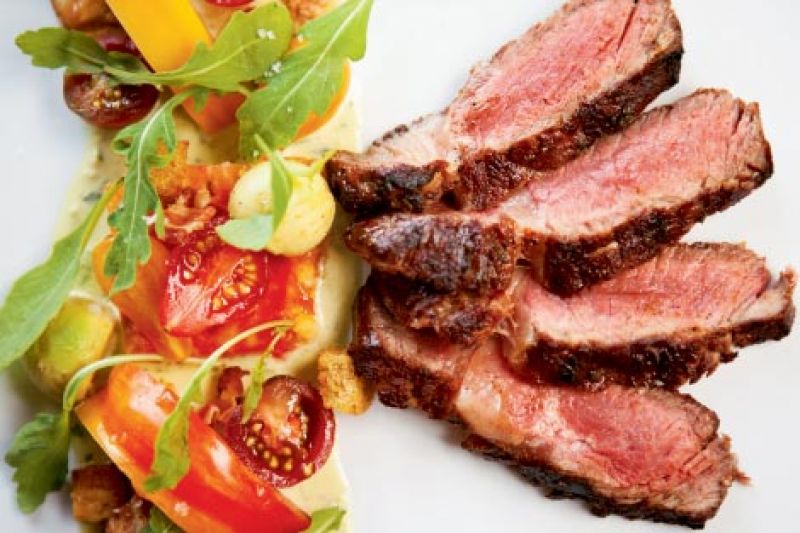
Ever shell out for pricey cuts of beef, only to ruin them on the grill? It’s a tragedy that Nathan Thurston, chef de cuisine of The Ocean Room at The Sanctuary, can help home cooks prevent.
“Steak cookery is very challenging, but some key pieces of advice can help avoid missteps.”
Thurston knows his beef, as good steak is a source of pride at The Ocean Room. “Weekly, we travel to MiBeck Farms in Barnwell to pick up a steer, which we fabricate in our kitchen,” says the Johnson & Wales grad, who’s been a member of The Sanctuary culinary team since the resort opened in 2004. “To get a delicious result, you have to start with a quality product.”
Look for meat that’s well-marbled, “meaning that the red flesh has abundant specks of white fat in it,” the chef explains. “During cooking, this fat breaks down, making the steak more tender and flavorful.” While MiBeck Farms meats can be special ordered, any U.S.D.A. Prime or Certified Angus Beef sold in stores will display similar ratios of fat to flesh.
When you buy a choice cut, you want to be sure it’s seasoned perfectly. “Do this before you grill,” says Thurston, who uses a fine sea salt—“because a coarse or kosher salt will not consistently stick to the meat”—and peppercorns toasted in a pan for 30 seconds, then freshly ground.
As for the grilling, that takes practice, he warns. “The most accurate way for home chefs to test for doneness is with a probe thermometer. We serve most of our steak medium rare, because that’s when it’s most juicy and tender.” To follow suit, grill over the hottest part of the grill (look for where the grates glow white), for two minutes on each side, then check the temperature. “Look for the meat to reach 90° to 95°F. You may need to flip it another time or two and test again,” he says. “Use the same entry point when inserting the probe to minimize juice loss.”
Finally done? Resist the urge to serve immediately. “Top the steak with butter—we use an herb compound—and then let it rest for six to eight minutes. As the meat cooks, moisture travels from the exterior to the interior: slice into it right away, and the juices will pool out on your plate. Let it rest, and they’ll redistribute,” Thurston explains. During this time, carryover cooking also raises the meat’s temperature some 35°F.
Pair your prime cut with his tomato salad recipe, available at www.charlestonmag.com, and you have the makings for a stellar late-summer cookout.